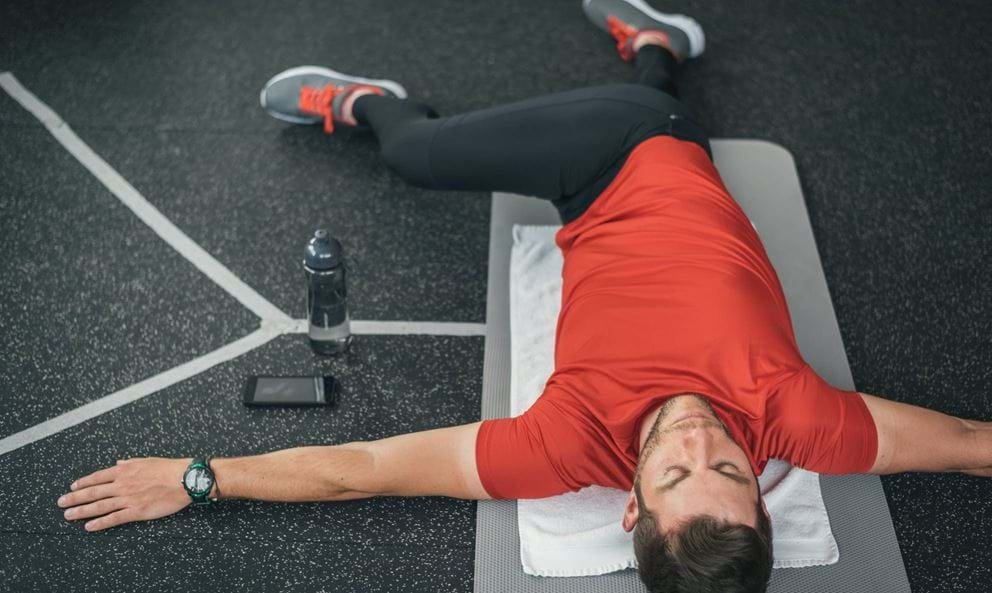
Mobility Exercises To Ease Tension And Improve Posture
If you’ve been finding you’ve moved less and sat more recently, don’t worry, you’re by no means alone. While there are many benefits from an increase in working from home, you may have found it’s been having a negative effect on your joints and muscles. Muscle soreness, tension and tightness could all be a result of poor mobility, but don’t worry, this guide will show you what to do, to start improving yours.
What is mobility?
When it comes to your body, mobility is quite simply the ability to freely move yourself using your muscles and joints, ideally without requiring any support or feeling any stiffness or stress. So, raising your arms, swinging your legs, rolling your shoulders, moving into a seated position, bending over… these all require mobility.
Mobility is generally linked with a good range of movement, healthy joints, strong muscles, stability and flexibility - all of which can usually be improved with regular exercises and stretches. While there are many types of exercises that just focus on how to improve flexibility (e.g. increase your body’s ability to move through its full range of motion), or perhaps boost your stability (e.g. to help with balance), full mobility really takes a combination of all of these different elements so you can move your muscles in different ways.
Why is mobility important?
Mobility is what helps you move around - keeping your posture sturdy and everyday activities problem-free. If your mobility starts to deteriorate in any way, you may struggle to move in a free, unsupported manner. So if, for example, you suffer with poor hip or knee mobility, you could find it painful or difficult to walk without the support of a stick or wheelchair.
Improving your mobility can also help to boost your performance and technique in activities like running, weight lifting or competitive sports and can help lower the risk of injury. If your mobility is restricted as you work out, then smaller, weaker assistance muscles will be engaged to compensate, which could start to feel painful. If you find that certain exercises lead to pain, it could be that the muscle is underdeveloped causing tension and soreness in the joints.
What causes limited mobility?
There are a range of issues that could lead to restricted mobility. These could include (but aren’t limited to):
1. Older age - aging can affect bone density, muscle mass and strength, which can result in stiffer, less flexible joints
2. Injury - if you injure a muscle, you could experience pain, swelling and stiffness, all of which can limit mobility
3. Low activity levels - if you’re living a fairly sedentary lifestyle then you’re missing out on the continual strengthening and mobilising of your muscles and joints. As they get weaker, you could suffer from increased tension and stiffness
4. Chronic diseases (e.g. diabetes, osteoporosis or arthritis) - some diseases can affect the joints, flexibility and mobility, causing pain and stiffness
5. Obesity - extra weight can add additional pressure to joints and muscles, meaning they need to work harder to perform well. If they struggle, this could lead to mobility issues and injury
If you don’t suffer with any major illnesses or injuries, then it’s very likely that lack of mobility is being exacerbated by (if not caused by) a more sedentary lifestyle, such as an increase in time spent at a desk, in front of the TV or driving instead of walking. Luckily, if this is the case, then there are steps you can take to improve your mobility again.
What are mobility exercises?
Mobility exercises are movements, stretches and actions that, when repeated, will help to improve your mobility by boosting your muscle strength, flexibility and stability. In many cases these exercises require no equipment, but you can also integrate items such as resistance bands, weights and balancing balls to increase the intensity of each movement.
Yoga, pilates and barre are all excellent activities for increasing mobility, and also for easing stress which can cause muscles to tense up. Most warm ups, cool downs and dynamic stretches will also help with mobility, and foam rolling after a workout is another popular approach - which has been shown to ease tight muscles by breaking up scar tissue and improving circulation.
When to do mobility exercises
A lot of mobility movements can be done at any point throughout the day, so are a perfect way to ease tension and soreness when it hits - especially good if you’re sitting all day for work.
Many people incorporate mobility exercises into their warm ups, which is a great way to prepare your body for a workout and loosen up any stiff joints and muscles ahead of your main exercise. Likewise, you may find you’d like to include some mobility-boosting stretches in your cool down, helping to ease any tension that may have flared up during your workout.
However, you can also focus your whole workout on just improving your mobility - exercises such as yoga or pilates are a great way to improve your strength, flexibility, stability and range of movement (and they’re excellent stress busters too).


Leave a Reply